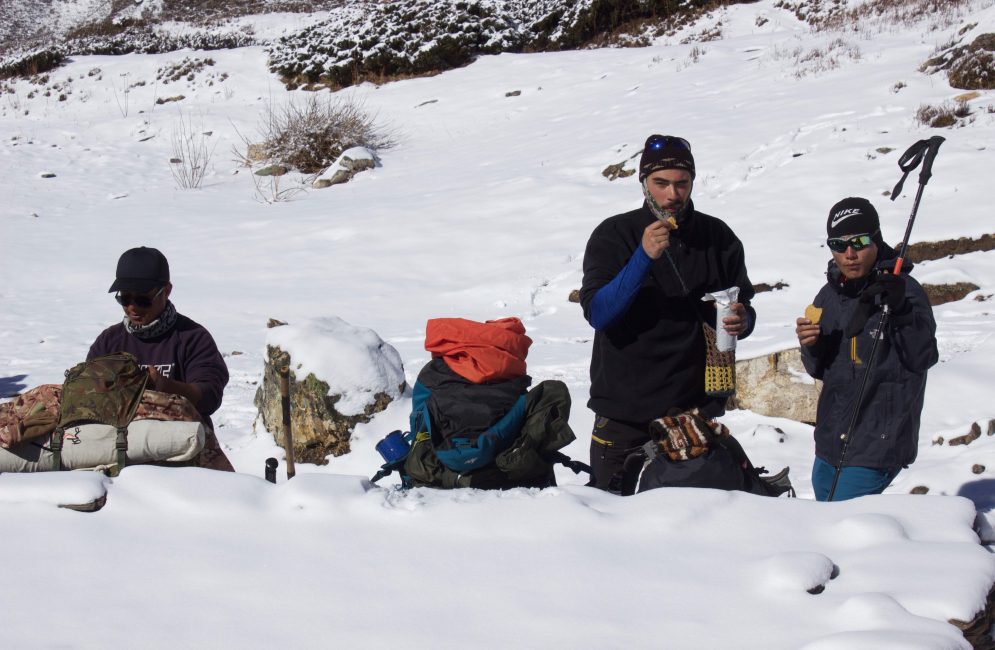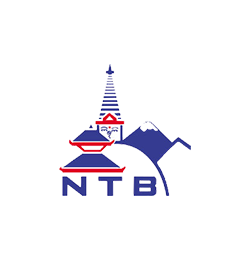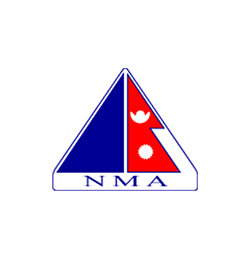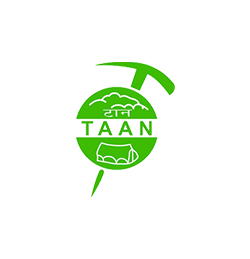
List of Most Challenging Trekking in Nepal
- Tilicho lake trek – 13 days
- Amphulaptsa Pass Trek – 13 Days
- Everest Chola Pass Trek – 15 Days
- Dhaulagiri Round Trek – 15 days
- Makalu Base Camp Trek – 19 days
- Everest Three High Passes Trek – 20 Days
Tilicho Lake Trek – 13 Days
Introduction
The Tilicho Lake trek is one of the most attractive trekking destinations in Nepal. The trek passes through some of the most prominent locations of the Annapurna Region, with the major highlight being the Tilicho Lake (4920m) itself.
Tilicho Lake is the world’s highest lake. With this trek, you get to witness the incredible Himalayas of the Annapurna region, lush green hills, vast meadows, and traditional villages of the Annapurna community.
If you are a nature lover and desire to travel in the Himalayas, the Tilicho Lake trek is your perfect choice. Although the trek is strenuous and isn’t suitable for all, one can easily get swayed with the beauty this journey holds.
The Tilicho Lake trek is one of the most exceptional adventures in Nepal. With its routes, it combines a few of the trails from the world-famous Annapurna Circuit. You can rejoice in the beauty of the Annapurna with this fantastically designed trek.
Highlights of the Trek
- Take on an adventurous journey to the highest lake in the world
- Witness incredible views of mountains such as Annapurna, Dhaulagiri, Machhapuchhre, Hiunchuli, Manaslu, and many more
- Visit various Manang villages on the trail and get acquainted with their culture and traditions
- Cross the highest pass of Nepal
Best season to Go
The best time and the most suitable season to do the Tilicho Lake trek is during autumn and spring. These seasons occur from August to November and March to May, respectively. During these months, climatic conditions are the most favorable for trekking. Starting with clear weather, the skies are empty of clouds, and the views are also the best.
Dry trails, suitable temperatures, and clear weather contribute to a safe and ideal atmosphere for trekking. Trekking here during winter can be very challenging. Temperatures reach sub-zero levels during winter, and snowfall occurs most of the time. Several areas, including high passes, remain closed during winter for the safety of trekkers.
Lake Tilicho also freezes due to the cold, and there isn’t much to enjoy unless the factors that exist during this season are what you seek.
Similarly, summer and monsoon coincide between spring and autumn. Heavy rainfall occurs in many areas of the route. Trails are wet and slippery, while the skies are cloudy. Thus, it is least recommended that you trek during summer or winter.
Tilicho Lake Trek cost
The cost of this trek is around $1000 per person. The cost package includes all charges for meals, accommodation, transportation and flights, guides and porters, trekking permits, and several minor costs.
Tilicho lake Trek Difficulty
Experts grade this trek as a level 4 in difficulty. This means you must be physically fit to a certain extent and have an intermediate trekking experience. You will have to walk great distances for long hours during the trip. You will also do tough climbs across the highest pass in Nepal, Thorung La Pass (5416m).
Tilicho lake Trek Map
The Tilicho Lake Trek begins with a scenic drive from Kathmandu to Besisahar. From Besisahar, you drive to Chame. Then, you start trekking through the route: Pisang, Manang, Ice Lake, Khangsar, Tilicho Base Camp, Tilicho Lake, Manang, Pisang, Besisahar, and back to Pokhara or Kathmandu.
Amphu Laptsa Pass Trek – 13 days
Introduction
The Khumbu might be known best for Everest, but there are hidden treasures one can find in this region. One such hidden gem of the Khumbu is the Amphu Laptsa Pass. Located in the shadows of the Baruntse Mountain, the Amphu Laptsa pass looms over the beautiful valley of Imja Tse.
The Amphu Laptsa Pass trek is one of the most popular rural treks of Nepal. This trek allows you to rejoice the beauty of the remote side of Khumbu while also being able to explore the beauty of the mainstream side of Everest.
The Amphu Laptsa Pass is 6,461 meters tall and projects a beautiful view of mountains and the valleys below. This is an arduous trek and not suitable for all types of trekkers. If you have experience in trekking, especially crossing high passes and walking great distances, you can do this trek.
Highlights of the trek
- Climb the iconic pass of Amphu Laptsa.
- Witness breathtaking views of mountains such as Everest, Nuptse, Lhotse, Ama Dablam, etc.
- Explore rural settlements of the Everest region.
- Traverse through the diverse array of Himalayan flora and fauna of the Khumbu region.
Best season to Go
The best time to do this trek is around autumn (August to November) and spring (March to May). These seasons offer the best atmosphere for trekking. During these months, the weather remains clear almost throughout the season.
Clear weather allows you to complete the trek without any disturbances in the schedule. This also invites the best possible views of the landscapes with clear skies—the temperature as well as mild and warm during these months. Lastly, the scenery also becomes vivid as the greenery is blooming, and the views are lush with natural colors.
Doing this trek during winter is more challenging than the trek already is. The cold and snow might not let you complete the trek as a whole or on time. If conditions get worse, the pass and new places of the region remain closed to prevent trekkers from putting their lives at risk.
Similarly, summer coincides with the monsoon, and thus heavy rainfall occurs in the region. You might not be able to follow up with the planned schedule as the rain might cancel hikes on several days. Therefore, doing this trek in autumn or spring is highly recommended.
Amphu Laptsa Pass Trek map

The journey of the Amphu Laptsa Trek begins with a scenic and thrilling flight from Kathmandu to Lukla. The trek commences as you take the route: Chutanga, Thulikharka, Thangnak, Khare, Kongma Dingma, Seto Pokhari, Amphu Laptsa Base Camp, Chhukung, Tengboche, Namche Bazaar, and back to Lukla.
Amphu Laptsa Pass Trek difficulty
The Amphu Laptsa Trek is moderate and requires technical knowledge to complete safely. The hardest part of the trek is reaching Chhukung by crossing Amphu Laptsa pass. You will use various climbing tools to complete this pass. Therefore, you require training and experience on climbing to do this trek.
Amphu Laptsa Pass Trek cost
The cost of this trek is $1510 per person. The cost includes various services such as flight fares, transportation costs, accommodation, meals, guides, porters, etc.
Everest Chola Pass Trek – 15 Days
Introduction
The Everest region has numerous of its features to offer. Not all can be witnessed on a single try, but with the Everest Chola Pass Trek, you can explore the marvelous sights of the Everest region. The Everest Chola Pass Trek is a trek that gathers a bundle of the most precious features of the Khumbu region.
The Everest Chola Pass trek runs a route through the lush landscape, forests, monasteries, people, culture, mountainous lifestyle, glaciers, and glacial lakes. This trek allows you to rejoice the standard Everest Base Camp trek while adding various tastes to the journey.
Reaching the foot of the world’s tallest mountain surely imprints a feeling of great achievement in one’s mind. Also, this journey takes you over the Chola pass. Rounding up, you get to witness some of the most prestigious mountains of Nepal, such as Mt. Everest, Mt. Nuptse, Mt. Lhotse, Mt. Ama Dablam, Mt. Pumori, and many more.
Highlights of the trek
- Traverse through the quaint Himalayan biodiversity of the Sagarmatha National Park
- Cross Chola pass (5420 m) and witness a splendid 360-degree view of the Himalayan range
- Witness views of mountains such as Mt. Everest, Mt. Nuptse, Mt. Lhotse, Mt. Ama Dablam, Mt. Pumori, and many more.
- Reach the foot of the world’s tallest mountain at Everest base camp and hike to the iconic viewpoint of Kalapatthar
- Explore the unique Sherpa villages and get acquainted with the people and their culture
- Visit ancient monasteries along the way at various villages
Best season to Go
The best time to do this trek is around autumn and spring. These seasons occur from August to November and March to May. During these months, the weather and temperature are the most accommodating for trekking. You will experience clear skies with the lowest chances of rainfall. Temperature also is warm and pleasant enough in the cold region of Everest for trekking.
On the other hand, winter is severely cold, and most high-altitude regions have subzero temperatures. Going on a 15-day long journey in the cold can be extremely difficult, even for highly experienced trekkers.
Moreover, many areas at high altitudes remain closed. Summer is the season for heavy rainfall. Trekking is possible during summer, but torrential downpour may keep you waiting to complete your trek.
Everest Chola Pass Trek cost
The cost of this trek is $1430 per person. The cost includes flight and transportation, accommodation and lodging, meals including breakfast, guides, and porters, etc.
Everest Chola Pass Trek difficulty
This trek can be classified as a moderate trek. The most difficult part of this trek will be to cross the Cho La pass at 5,410 meters. If you have been trekking for a while and have a good amount of experience with walking long trails, this trek is suitable for you. This trek can be tough for beginners and even moderately experienced ones.
Everest Chola Pass Trek Trek map
The Everest Chola Pass Trek begins from an exhilarating flight to Lukla. From here, the trails take the route through Phakding, Namche Bazaar, Tengboche, Dingboche, Lobuche, Gorakshep, Everest Base Camp, Kala Patthar, Thagnag, Gokyo Lake, Gokyo Ri, Dole, Namche, and back to Lukla.
Dhaulagiri Round Trek – 15 Days
Introduction
The Annapurna region surely is a land of wonders. Possessing numerous natural beauties, there is a wide array of locations to visit in this region. One such outstanding choice here is the Dhaulagiri Round Trek.
The name “Dhaulagiri” was derived from the Sanskrit word “Dhawla” and “Giri,” Dhaulagiri means dazzling White Mountain. True to its name, the Dhaulagiri is a dazzling beautiful snow-clad peak.
Unlike many other popular treks of the Annapurna, the Dhaulagiri round trek is somewhat isolated. If you wish to travel in a less crowded place and admire solitude, the Dhaulagiri round trek is the best option for you in the Annapurna region.
Dhaulagiri (8,167m) is the seventh-highest mountain in the world. During its discovery, it was assumed to be the highest peak. This assumption lasted for 30 years before Kanchenjunga took its place. Nevertheless, it is still a popular place to visit for those who seek adventure.
Highlights of the trek
- Cross two extreme passes: the French Pass (5,240m) and Thapa Pass (5,155m).
- Traverse through rural settlements of the Annapurna region and meet ethnic people of mostly; Gurung, Magar, and Thakali tribes.
- Witness the world’s deepest gorge, the Kali Gandaki gorge.
- Get spectacular views of mountains such as the Dhaulagiri, Annapurna, Machhapuchhre, and Thorong Peak.
- Visit some of the most iconic villages of the Annapurna region.
- Venture on one of the most challenging treks of Nepal.
Best season to Go
The best time to do this trek is from March to May and October to December. During these months, the weather is good at moderate temperatures. The skies are clear, offering great views of the landscapes. Minimal chances of rain and snow also make the trip safer.
Months besides those mentioned above have unpredictable and dangerous weather conditions. The trails of this trek are intricate and pass through treacherous lands. During summer, especially, there is a high risk of avalanches and landslides due to heavy rain. Trails are muddy and slippery, which can give trekkers a tough time.
Dhaulagiri Round Trek Cost
The Dhaulagiri Round trek $2560 per person. The package includes various services such as accommodation, meals, flight and transportation charges, guides, and porters.
Dhaulagiri Round Trek Difficulty
The Dhaulagiri round trek is also known to be one of the most challenging treks of Nepal. It is indeed a strenuous trek for various reasons. It is also labeled as an “extreme trek.” This is because you are required technical knowledge of climbing with ropes, ice-axes, and crampons.
Also, you will have to walk very long distances during the trek. The trek covers some extreme high altitudes. Thus, you should only attempt this trek during the snow-free months. The path follows glaciers, and high snowcapped passes. Therefore, this is only suitable for fit and experienced individuals who can go on demanding treks.
Dhaulagiri Round Trek Map
The Dhaulagiri Round Trek is a 15-day journey that circuits around the world’s seventh highest mountain. The journey begins with a scenic drive to Beni through diverse, changing landscapes of the valley. From Beni, the trekking begins on foot. You take the route through Phaliya Gaon, Bagar, Dobhan Kharka, Chartare, Bhainsi Kharka, Pakhaban, Japanese Camp, Dhaulagiri Base Camp, Hidden Valley, Elevation Camp, Marpha, Lete, Tatopani, Ghorepani, and Nayapul via Poon Hill, and finally back to Pokhara.
Makalu Base Camp Trek – 19 Days
Introduction
The world’s fifth highest mountain, Mount Makalu, lies in the eastern region of Nepal. The Makalu Base Camp trek is a journey that captures the taste of the pristine form of nature. This is one of the most popular treks for trekkers who wish to travel in isolation.
The Makalu Base Camp trek is an extraordinary journey that leads you to explore high-altitude terrains, snow-clad landscapes, and the vibrant ethnic Himalayan lifestyle. You also get the opportunity to witness the diverse Himalayan flora and fauna as you traverse inside the Makalu Barun National Park.
The region offers magnificent views of some iconic mountains such as Mt. Everest, Mt. Makalu, Mt. Lhotse, Mt. Baruntse, etc. You also come across the lush valley of Arun. One of its major attractions is its remoteness and off the beaten trekking trails.
The journey of the Makalu Base Camp trek encompasses both low and high altitudes of the Himalayas. Lush rhododendron forests, picturesque Gurung villages, lush river valleys, and a plethora of flora and fauna decorate the lower landscapes of this journey.
Highlights of the Trek
- Witness the breathtaking views of mountains such as Everest, Makalu, Lhotse, Baruntse, and many more.
- Visit various eye-catching villages where you can meet people from different communities such as Gurung, Rai, Limbu, and Sherpa.
- Explore the magnificent and uniquely diversified Himalaya flora and fauna of the Makalu Barun National Park.
- Reach the foot of the world’s fifth highest mountain.
- Rejoice in one of Nepal’s most remote and unspoiled trekking destination.
Best time to Go
the best time to do the Makalu Base Camp trek is during autumn (August to November) and spring (March to May). The weather conditions in the Himalayas are mostly unpredictable and cold. Thus, you have to find a time where there are least chances of weather disturbances, and the temperature is warm enough.
Concerning these two qualities, the above-mentioned seasons accommodate clear weather and moderate temperatures. It is also safer to travel during these months as the trails are dry and easy to walk on.
In contrast, the trails are covered in a massive amount of snow during winter. You might even get trapped at some places due to constant snowfall. Similarly, there is heavy rainfall in summer. Thus, it is highly recommended that you avoid these two seasons while planning the trek.
Makalu Base Camp Trek Cost
The cost of this trek is $1790 per person. The cost includes accommodation, meals, transportation charges, guide and porter fees, and similar services required for the trek.
Makalu Base Camp Trek Difficulty
As you ascend to the higher altitudes, breathtaking panoramas of the Himalayas, high altitude lakes, and high passes start becoming more visible and clearer. The Makalu Base Camp trek is a moderate trek. However, some parts of this journey are difficult. Due to this, it is only suitable for those who are enthusiastic native to trekking and would prefer to travel in solitude rather than crowds.
Makalu Base Camp Trek Map
The Makalu Base Camp trek begins from Tumlingtar as you drive to Chichila. On foot, trekking begins from Chichila, where you take the route: Num, Seduwa, Tashigaon, Khoma Danda, Mumbuk, Nehe Kharka, Langmale Kharka, and Makalu Base Camp. Yangri Kharka, Mumbuk, Khoma Danda, Tashigaon, Num, drive to Tumlingtar, and then to Kathmandu.
You will spend one day for acclimatization at Kohma Danda, which is situated at an elevation of 3,500 meters. This break will help your body acclimatize to the change in altitude and function properly.
Everest Three High Passes Trek -20 Days
Introduction
One of the most challenging treks to do in Nepal is the Everest Three High Passes Trek. For reasons as the name suggests, this trek is for those who are ready to accept plenty of challenges. The Everest Three High passes trek surely provides the thrill of a lifetime!
Of the numerous attractive aspects of the Khumbu region, the three passes of Kongma La, Chola pass, and Renjo La are mighty and hard to climb. The Everest Three High Passes trek demands you to conquer all three of these passes in a single journey. Even the sound of this journey incites excitement.
As the trek unfolds, you discover the real beauty of the Khumbu region. The trek follows trails along the icy trails of high passes and rocky terrain. Not everyone can travel the trails here. Thus, most of the area remains untouched and unexplored. But as you move along the way, you can uncover mind-blowing views of Mt. Everest, Mt. Lhotse, Mt. Nuptse, and Mt. Thamserku, Mt. Ama Dablam, and many more.
This trek also allows you to enjoy the Himalayan biodiversity of the Sagarmatha National Park.
Moreover, as you walk through remote villages, you meet the mountainous people and discover their culture and communities.
The Everest High Pass trek encompasses trails of both the Everest Base Camp trek and the Gokyo Ri trek. In conclusion, this trek gives you a round trip of the Khumbu by which you get a holistic experience of the region’s real beauty.
Highlights of the trek
- Conquer all three high passes of the Everest region: Kongma La (5,535m), Cho La (5420m), and Renjo La (5340m).
- Explore the lesser-traveled remote vibrant valleys of the Everest region and get acquainted with the culture and lifestyle of the local people.
- Stop by the Everest Base camp and Kalapatthar to enjoy part of the Everest Base Camp trek.
- Witness the famous Khumbu icefall.
- Get amazing views of the iconic mountains of the Everest region such as Everest, Nuptse, Lhotse, Ama Dablam, Thamserku, etc.
Best Season to Go
The best time to do the Everest Three High passes trek is during spring and autumn. These seasons occur from March to May and August to November. During these months, the weather is dry, and there is a meager chance of rain or snowfall. The temperatures are also moderate and bearable even around the highest of the altitudes.
You can enjoy a safer journey with clear weather as the trails remain dry as well as unobstructed views will empty skies. However, if you wish to travel during winter, you must brace yourself as it can get challenging. The weather will be unpredictable, with snowfall occurring now and then.
The trails will be covered with snow, and most areas, including the passes, will be restricted from access. The temperature drops below 0 degrees and even way lower in high altitudes. Thus, it is least recommended that you do this trek during winter.
Similarly, summer is also not suitable for this trek. Although the atmospheric conditions are not that worse as of winter, trekking in summer can be problematic. Summer coincides with the monsoon. Thus, there is a constant downpour in many parts of the region.
During winter, the trails are wet, and the skies are cloudy. The muddy and slippery trails make your journey difficult and unsafe. Thus, it is highly recommended that you avoid summer and winter for trekking to the dangerous three passes.
Everest Three High Passes Trek Cost
The cost of this trek is $1650 per person. The cost includes various services such as flight and transportation fees, accommodation and meal costs, guide and porters, trekking permits, and other minor charges.
Everest Three High Passes Trek Difficulty
The Everest High Pass trek is one of the most challenging treks in Nepal. The route is based on a 20-day itinerary. It is only suitable for those who are highly experienced in trekking and have high physical fitness.
Climbing three passes in one journey is a very challenging task. Therefore, this trek requires practice and knowledge about trekking in high altitudes, especially the Himalayas.
Everest Three High Passes Trek Map
The Everest High Passes trek begins with a thrilling flight to Lukla. From Lukla, trekking commences as you travel through the route: Phakding, Namche Bazar, Tengboche, Dingboche, Lobuche via Kongma La pass, Gorakshep, Everest Base Camp, Dzongla, Thangnak village via Cho La pass, Gokyo valley, Lumde via Renjo, Thame, Namche, Lukla, and finally back to Kathmandu.
Here is the List of Restricted Area Trekking in Nepal and Trekking in Nepal.






